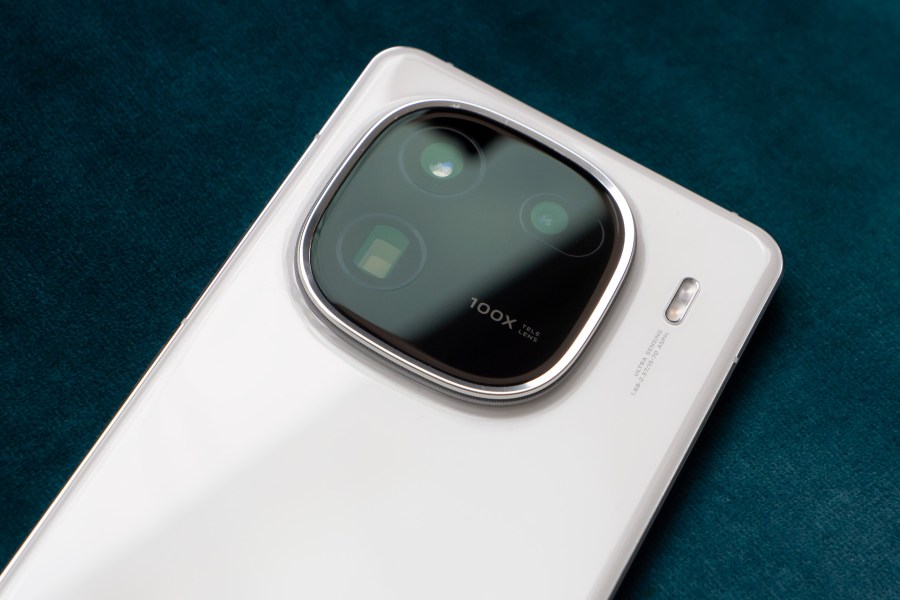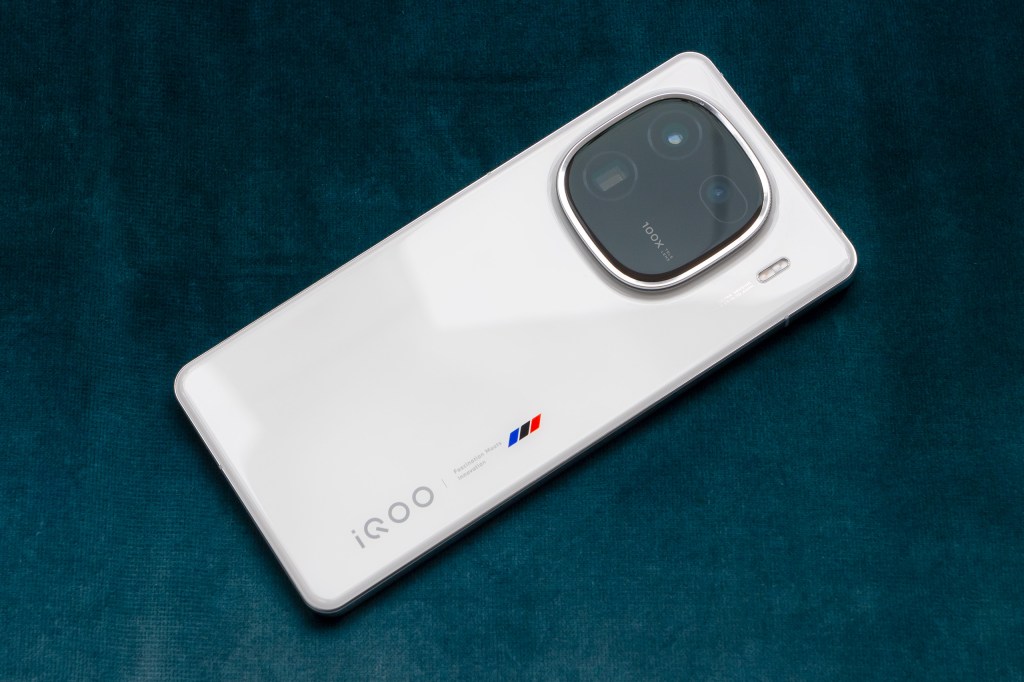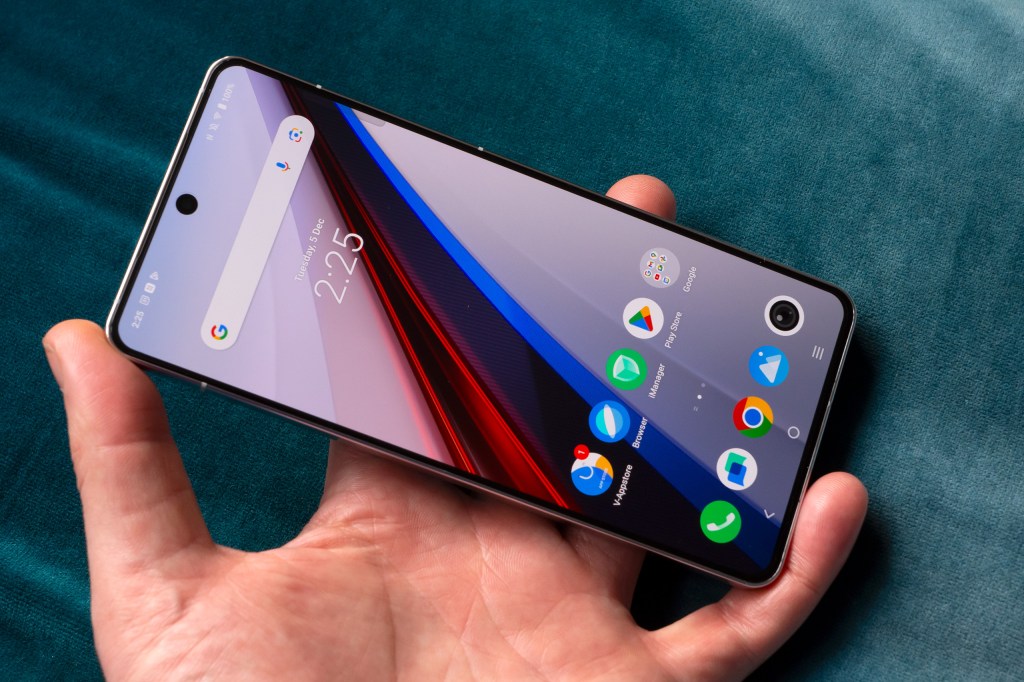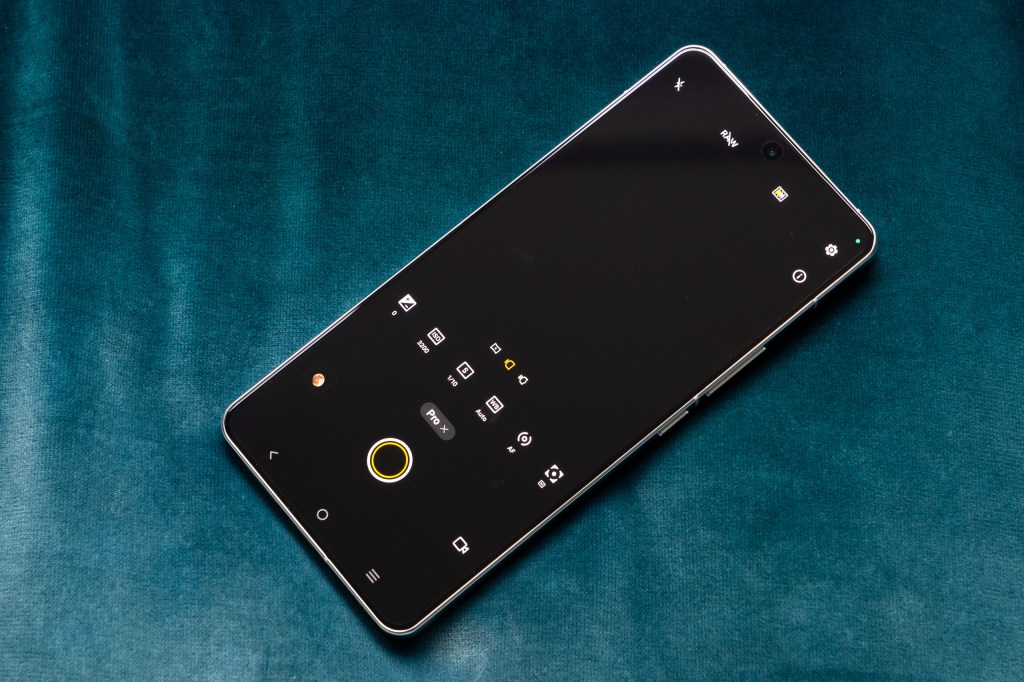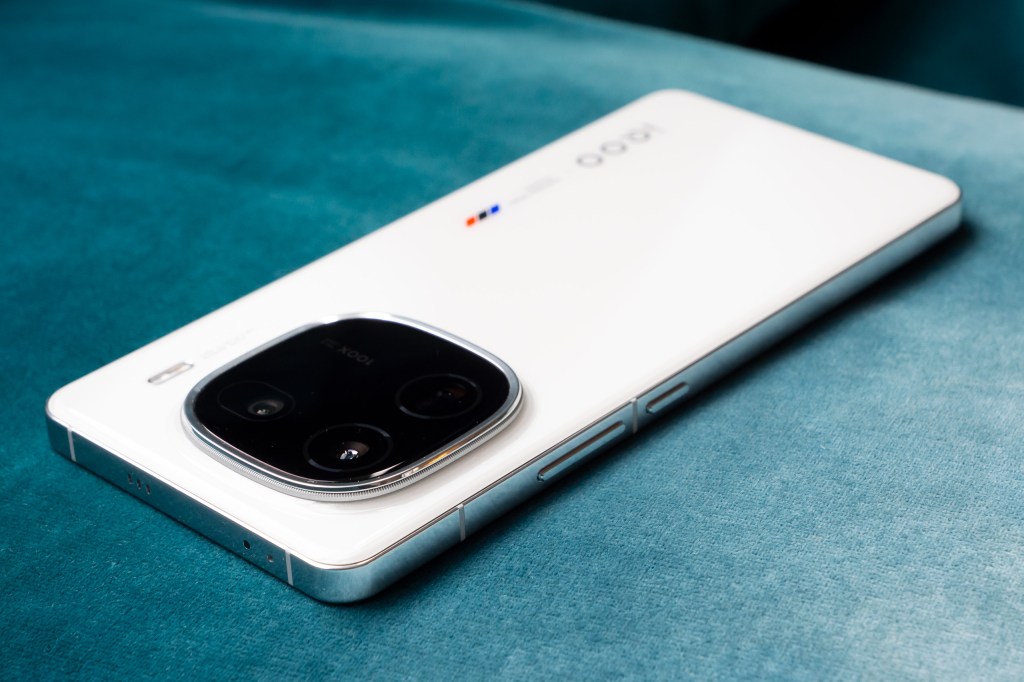In terms of photography features, the iQOO 12 phone is pushing boundaries on what’s possible, with a new term “astrography” being one of the key clues as to what iQOO think is possible with the cameras. In addition, the 3x telephoto lens offers a periscope design with close focusing to enable telephoto macro photography!
Who are iQOO you might be asking? iQOO are an independent sub-brand of vivo. If you’re wondering who vivo are… then you’re probably not alone. They used to be part of BBK Electronics (which included Oppo and OnePlus), with vivo being its own entity within. Now vivo are independent, and iQOO (pronounced eye-koo) are producing phones that should suit both photographers, and gamers!
Regardless of the history of these mobile phone manufacturers, the iQOO 12 has enough credibility to come emblazoned with official BMW M Motorsport branding on this Legend edition of the iQOO 12.
There’s also the brand new Qualcomm Snapdragon 8 Gen 3 included, the newest and fastest mobile processor from Qualcomm, which has been paired with Vivo/iQOO’s own “customized Supercomputing Chip Q1” designed to enhance the gaming experience. Needless to say, this phone should be fast!
Key Features at a glance:
- 50MP main wide-angle, f/1.68, OIS, 23mm equivalent (1/1.3inch sensor)
- 50MP ultra-wide-angle, f/2.0, 15mm equivalent
- 64MP telephoto, f/2.57, 3x/70mm equivalent, OIS
- 16MP selfie camera, f/2.45, 27mm equivalent (video: 1080P only)
- 8K 30p, 4K 60/30p, Full HD 240p
- 6.78inch screen, AMOLED, 144Hz, up to 3000nits brightness
- 5000mAh battery, 120W charging
- 12/16GB RAM, 256/512GB storage options
- Android 14
- 163.2 x 75.9 x 8.1mm
- 203.7g weight
iQOO 12 Hardware, design and features
We review smartphones from the perspective of choosing one for it’s photography and camera performance. Here we look at what the iQOO 12 camera offers, and the features included for photography and video.
It’s become the norm for flagship smartphones to offer a triple camera system, and at the cutting edge of this, companies have to work out new ways to stand out from the competition. In the case of Samsung, with the S22/S23 Ultra series, there’s a fourth telephoto camera with a real 10x telephoto lens. Google offer advanced computational photography and AI features, making it easier to get certain types of shots.
With the iQOO 12 they’re offering a 50MP ultra-wide-angle camera, a 50MP main camera, and a number of advanced features, including a 64MP 3x telephoto macro lens (similar to the one seen on the Xiaomi 13 Pro), as well as an Astrography mode, which iQOO claim is capable of capturing the Milky Way. We haven’t had clear enough skies to test this yet, but one thing the iQOO 12 does offer is an AR Planetarium feature that will draw the constellations onto the photo – whilst also giving you the original unedited photo of the stars!
The main photo modes are easy to access, and there are some nice little touches, including an on-screen display showing you how much exposure compensation you’re using when adjusting the usual brightness setting. Another feature is Supermoon – this uses AI to fill in the detail to give you an enhanced version of the moon. Much like the Samsung’s own moon photography feature.
Along with these modes, there are also a range of long exposure modes including modes designed for traffic photography, night graffiti (light painting), waterfalls, long-exposure crowd photography, fireworks, plus star-trails.
It’s not often that you get a smartphone designed for astrophotography, or “astrography” as iQOO has decided to call it. Unfortunately, living in the city, I haven’t yet been able to find a clear enough sky to fully test this feature, but will be adding this to the review when the opportunity arises.
There’s a “Pro” manual mode available with all the usual settings, as well as the option to shoot raw photos. In another mode you can also shoot using the full-resolution of the sensor, rather than the default pixel-binned option.
When you’re not using the phone for photography, you’ll find the phone is extremely quick. Geekbench 6 scores are: 2270 single-core, and 7053 multi-core. This is hella fast! As a reference point, the Samsung Galaxy S22 Ultra, Samsung’s flagship smartphone from 2022, scores 1224 single-core and 3503 multi-core in Geekbench 6.
In terms of other apps installed on the phone, there are a lot already pre-loaded. There is the usual Google Play store so you can access all your favourite apps, but there is also another app store called V-Appstore.
The phone has a premium finish, with squared off silver sides, and a slightly more curved back when compared to the front of the phone. The screen looks very nice, and includes HDR10+ support, as well as a 105% NTSC color gamut and 100% DCI-P3 accuracy ratings.
The in-screen fingerprint reader works well, and the phone offers rapid charging at 120W. However, the lack of wireless charging is a little bit of a shame. There’s an always-on AMOLED display with a fast refresh rate of 144Hz; which will be great for the gamers out there. The phone has an IP64 rating, which should mean it’ll survive a light rain shower.
iQOO 12 Performance
The iQOO 12 has been introduced as having “an ultra-large main sensor” and whilst the sensor isn’t as large as phones with a 1inch sensor, it does offer a large 50MP sensor for phone, at 1/1.3inches. This uses pixel binning to give 12.5MP images. This is combined with an f/1.68 aperture, optical image stabilisation (OIS), and advanced image processing to reduce noise and improve colour reproduction.
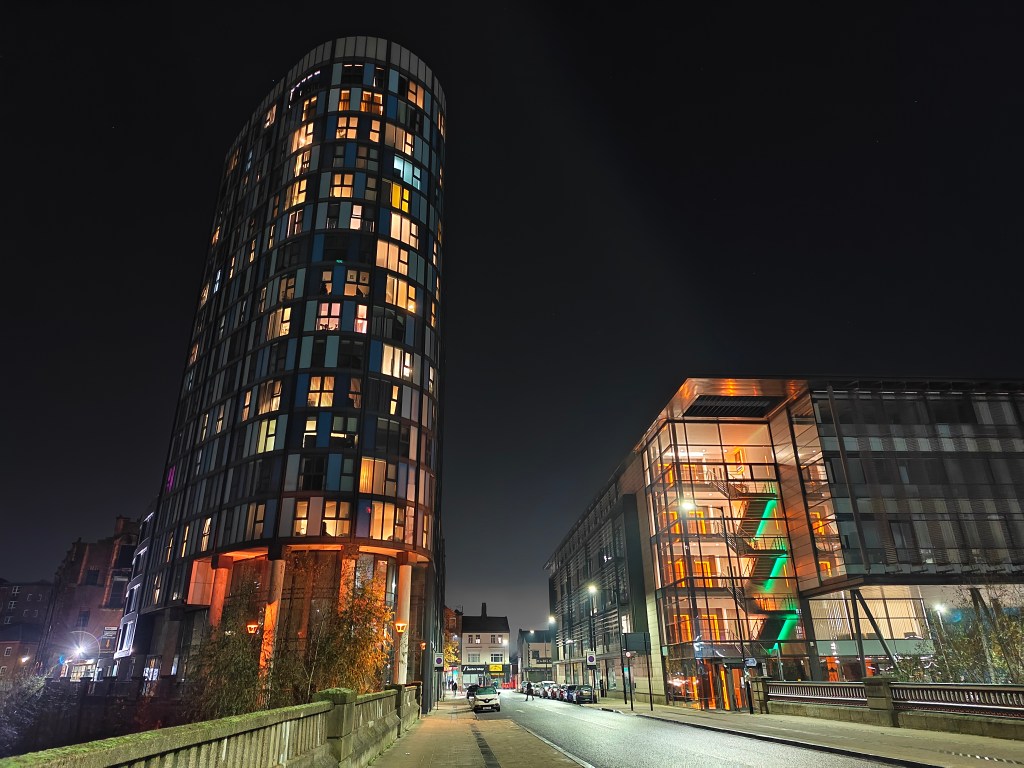
Low-light photography. Even when shooting at high ISO speeds, the results look good. Photo Joshua Waller
I’ve been particularly impressed by the low-light performance of this phone, with images shot it low-light giving some really nice colour reproduction, as well as low levels of noise, and good levels of detail.

Outdoors on a sunny day images are sharp and detailed. Photo Joshua Waller
Dynamic range is handled well with automatic HDR (high-dynamic range) combining a number of shots for greatly enhanced dynamic range, and detail from the main camera also impresses.

Main camera, photo taken at the British Museum. Photo Joshua Waller
With the main 50MP wide-angle camera you get pixel-binned 12.5MP images. You can also use a 2x zoom option if you want something in between 1x and 3x zoom. Results are really good, and it doesn’t seem to matter what the ISO speed says on photos, they remain detailed and noise free!

Using the ultra-wide-angle camera to capture as much as possible. Photo Joshua Waller
The 50MP ultra-wide-angle camera gives good results, with good colour, and relatively good levels of detail, again giving pixel-binned 12.5MP images. However, noise does become more visible when using this camera, especially when compared to the impressive results from the other cameras. This camera features auto-focus, and can be used for macro photography when needed.
The 64MP telephoto camera gives a 3x view, which is a nice telephoto camera to have on a smartphone – rather than just 2x for example – and also rather nice is that you can use it for close-up photography as well. This camera outputs pixel-binned 16MP image.
Results from the telephoto camera are very good, but unlike most other phones with a telephoto camera, even when shooting in low-light, the camera still keeps using the telephoto lens, rather than switching to digital zoom. You’ll also find a 10x zoom option, and results are better than I expected.
You can even use digital zoom up to 100x, but detail will suffer. Except when using the Supermoon feature, as this will use AI to add the detail back into the photo of the moon.
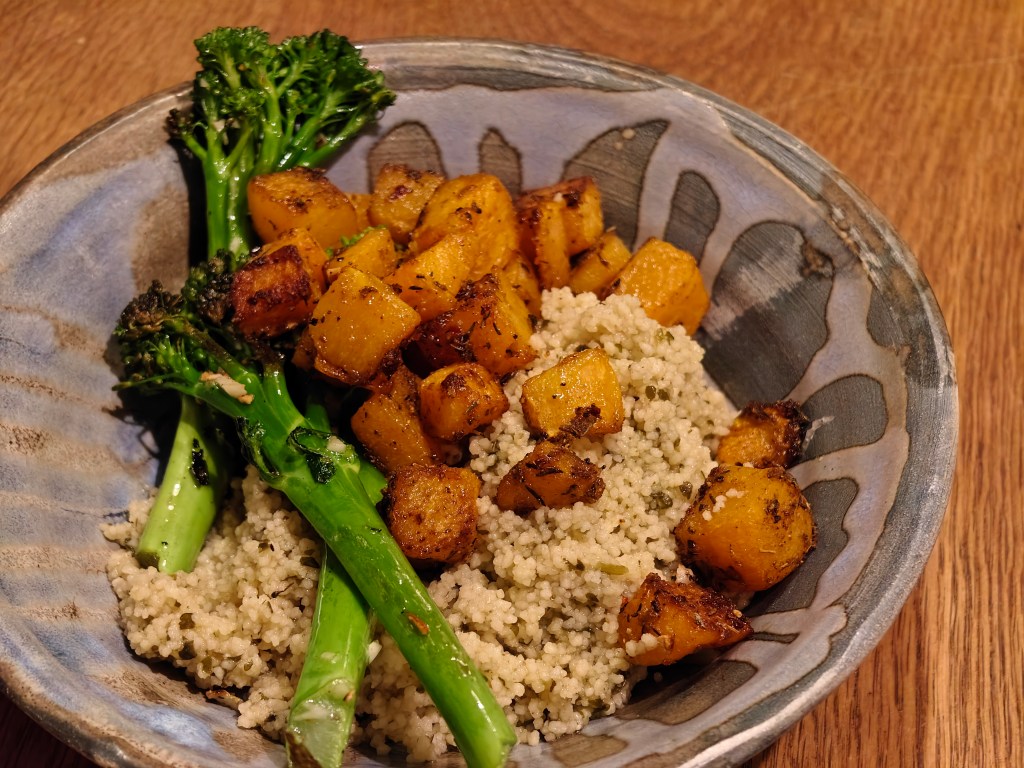
Close-up of food, using the 3x telephoto camera. Photo Joshua Waller
Macro performance can be very impressive, with it possible to use the telephoto camera for close-up photos, something that’s rarely found on other phones, even when they’re flagship models. This gives much more pleasing background blur (bokeh), and a more natural looking image, compared to using an ultra-wide-angle camera for macro photos.

Using the selfie camera with some background blur applied.
The 16MP selfie camera does not feature auto-focus which means other phones with AF will give better results. The selfie camera also maxes out at a resolution of Full HD, which means you’ll want to use the main cameras if you need higher resolution video. This might make it a poor choice for vloggers, and selfie fans.
The phone offers 8K video recording at 30fps, as well as 4K video from the rear camera at 60/30p, plus high-speed Full HD video at 240fps. However, unfortunately, only Full HD video is available from the selfie camera. Stabilisation is good, helping keep video stable when recording without a gimbal.
Value for Money
The iQOO 12 is priced at around €550 / $700. Considering how much this phone offers, this is impressive value for money. For a similar triple camera setup on a flagship Samsung or Apple, you’d easily be looking at spending double this. You even get the latest Qualcomm Snapdragon processor in the iQOO 12!.

Even when shooting at nearly ISO8000, the image looks good. Photo Joshua Waller
Another phone that could be considered, particularly if you’re interested in a telephoto camera that can also be used for macro photography, is the Xiaomi 13 Pro, however, this is more expensive.
iQOO 12 Verdict
The iQOO 12 offers a rather impressive set of rear cameras, with great performance from all three. The main camera gives really impressive performance in all conditions, as well as in low-light. The 3x telephoto camera performs really well, thanks to a periscope design, that enables close-focus use as well. This makes the telephoto camera feel like a real camera unit, rather than feeling limited as on other models.
The only real downside to this phone, in terms of cameras, is the 16MP selfie camera. Whilst this gives reasonable results, to give the full flagship level of performance, this would have included auto-focus as well as support for 4K video recording. If you don’t mind Full HD video from the selfie camera, then this may not matter too much to you.
If the iQOO 12 becomes available in your area, and you’re interested in the latest processor, and impressive speed (particularly for gaming), then the iQOO 12 is well worth looking for. For photographers it gives some impressive results, and I look forward to continuing to shoot low-light photography with this phone!

For more affordable options have a look at our guide to the best budget smartphones, or have a look at the best flagship camera phones if you have a higher budget to spend.
Follow AP on Facebook, Twitter, Instagram, YouTube and TikTok.

